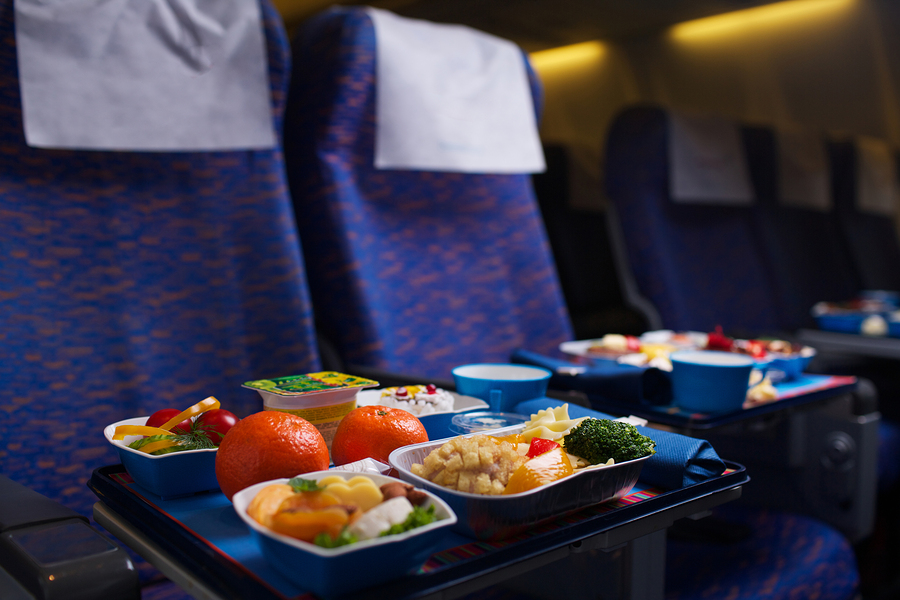Healthy eating on the go: handling airports and long travel days
Eating healthy on the move is notoriously difficult – fewer food options, hidden calories and disrupted routines can conspire against even the best intentions.
Figuring out the right foods to eat can have a real impact on how we feel during those long travel days; the heavily processed foods available in most airports and on airplanes often leave us feeling sluggish, bloated and irritable.
But where are the healthy foods hiding? If you’ve ever struggled to know what’s good and what’s bad at the airport, here’s a few simple tricks to help you make the right choices and find healthy foods to fuel your journey.
For breakfast
- Avoid: Greasy fry-ups and other fatty foods like a bacon sandwich, which are high in calories and can leave you feeling bloated or cause indigestion by the time you step on the plane.
- Look for: A mixture of protein and carbohydrates will keep you fuller longer. Look for oatmeal, yogurt with nuts and seeds, hard boiled eggs and colourful fruit.
- One place to try: Café Nero offers simple breakfast options – skip past the pastry case and seek out items like creamy Greek style yogurt with fruit instead.
For lunch
- Avoid: Too much salt, which can leave you dehydrated and bloated during a long flight. Save any crisps, chips and pretzels for when you’ve arrived at your destination.
- Look for: Low fat foods with plenty of slow-release energy. Wholegrain breads, skinless chicken breasts, salads and sandwich fillings with egg, bean and hummus.
- One place to try: Pret’s egg salad sandwich or Scottish Smoked Salmon sandwich on malted wholegrain bread.
For dinner
- Avoid: Food is harder to digest at cruising altitude, so resist the temptation to eat a 3-course meal just before you board. Heavily processed foods and refined grains that will feel heavy in your stomach – give items like pizza, pasta and hamburgers a miss.
- Look for: Grilled, steamed or baked lean meat or fish and choose a side salad or a medley of vegetables. Avoid extra calories by asking for any dressings or sauces on the side so you can choose your own intake.
- One place to try: The moreish salmon salad at Jamie’s Italian.
Snacks and light bites
- Avoid: Alcohol and carbonated drinks can cause bloating and dehydration – choose water, tea or freshly squeezed juice instead. Confectionary and other sugary snacks will effect your blood sugar and can trigger mood swings and leave you feeling tired after a sugar crash.
- Look for: Hummus, vegetable sticks, nuts, fruit, yogurt, soup or salad.
- One place to try: EAT offers nuts, fruit and other small snacks you can stock up on before boarding.
Before you go
Planning ahead is key to any healthy regime, and travel days are no different. Make travel days easier by doing some forward planning before you even leave home.
- Look at your travel schedule and take note of when you’ll be travelling and what meals you need to cover. If you can, plan to eat a balanced meal before you leave home for the day and pack some dry snacks to take with you to start you off on the right track.
- Remember you don’t have to eat the plane food – most flights have a food or beverage service, but if you’re flying in the middle of the afternoon you might not need a meal. Before you switch into autopilot and start mindlessly snacking to pass the time, ask yourself if you were at home would you be eating at this time? Often the answer is no.
How do you stay healthy on long travel days?
Rachel - Silversurfers Assistant Editor
Latest posts by Rachel - Silversurfers Assistant Editor (see all)
- Warming Soups - November 15, 2024
- What’s your favourite scary film? - October 26, 2024
- Easy Traybakes for National Baking Week - October 14, 2024
- Practical tips for living with arthritis - October 11, 2024
- 10th October is World Mental Health Awareness Day - October 8, 2024





















